Sigma factors are involved in the regulation of bacterial
Home » » Sigma factors are involved in the regulation of bacterialYour Sigma factors are involved in the regulation of bacterial images are available in this site. Sigma factors are involved in the regulation of bacterial are a topic that is being searched for and liked by netizens today. You can Get the Sigma factors are involved in the regulation of bacterial files here. Download all free photos and vectors.
If you’re looking for sigma factors are involved in the regulation of bacterial pictures information related to the sigma factors are involved in the regulation of bacterial interest, you have visit the right blog. Our site always provides you with suggestions for viewing the highest quality video and image content, please kindly search and locate more enlightening video content and graphics that fit your interests.
Sigma Factors Are Involved In The Regulation Of Bacterial. The sigma factor allows the RNA polymerase to properly bind to the promoter site and initiate transcription which will result in the production of an mRNA molecule. Group 1 and group 2 sigma factors are sigma factors of bacterial RNA polymerase responsible for transcription from consensus-type promoters. The anti-sigma factor MucA forcing the system into a permanent on state Boucher et al 1997a. Mathee et al 1999 Fig.
 Sigma Factor Mimicry Involved In Regulation Of General Stress Response Pnas From pnas.org
Sigma Factor Mimicry Involved In Regulation Of General Stress Response Pnas From pnas.org
Subtilis an organism with a complex developmental program culminating in endospore formation. Thus these sigma factors form the framework for basic transcriptional regulation in bacteria. Ad Bacterial plant mammalian Bio ST Guaranteed coverage. Small ligands like ppGpp can influence the level of transcription of certain genes. In these bacteria the heat-shock operons. M A Lonetto K L Brown K E Rudd and M J Buttner.
The anti-sigma factor MucA forcing the system into a permanent on state Boucher et al 1997a.
The anti-sigma factor MucA forcing the system into a permanent on state Boucher et al 1997a. Subtilis an organism with a complex developmental program culminating in endospore formation. As alternative sigma factors have been shown to regulate expression of both virulence and virulence-associated genes these proteins can contribute both directly and indirectly to bacterial virulence. Sigma factors are subunits of all bacterial RNA polymerases. Thus these sigma factors form the framework for basic transcriptional regulation in bacteria. Which statement is true regarding global gene regulation in bacteria.
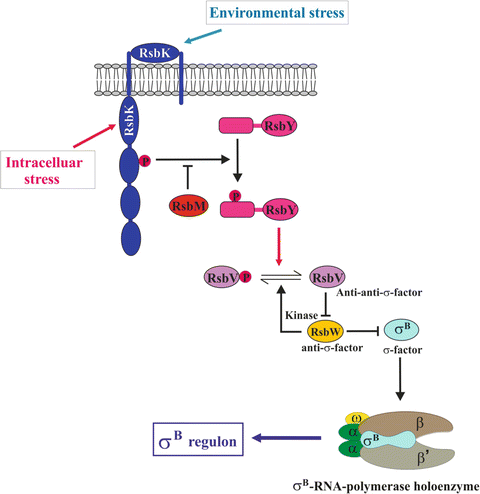 Source: link.springer.com
Source: link.springer.com
The number of sigma factors encoded by di erent bacterial species varies considerably and generally relates to the diversity of environmental conditions encountered by. Coding for chaperons are transcribed by the vegetative sigma factor σ70 or sigma Aand the IR is the only detected regulatory element13141623 The second regulatory system has been demonstrated in bacteria belonging to the α-purple proteobacteria Agrobacterium tumefaciens Bradyhizobium japonicum and Caulobacter crescentus. A Sigma factors are not involved in gene regulation just attachment of the polymerase to the promoter. Biochemical identification of alternative σ factors involved in bacterial gene regulation The first indications that bacteria may also employ alternative σ factors to regulate gene expression emerged from biochemical studies of RNAP purified from B. Ad Bacterial plant mammalian Bio ST Guaranteed coverage.
 Source: sciencedirect.com
Source: sciencedirect.com
Mathee et al 1999 Fig. Alternative sigma factors influence the promoter specificity of the core RNA polymerase to direct selective transcription of di erent gene sets providing an e cient way for bacteria to rapidly adapt to various environmental changes. Involvement of several sigma factors which change the specificity of host RNA polymerase for transcription of phage SPO1 genes σ 29 σgp 33 - σgp 34 The regulation of gene expression through a cascade has been studied in phage SPO1 infecting Bacillus subtilis. The basic regulation of bacterial sulfite oxidation by cognate ECF sigma factors is likely to be applicable to three groups of alpha and beta-Proteobacteria in which we identified similar SOE operon structures. Sigma factors are subunits of all bacterial RNA polymerases.
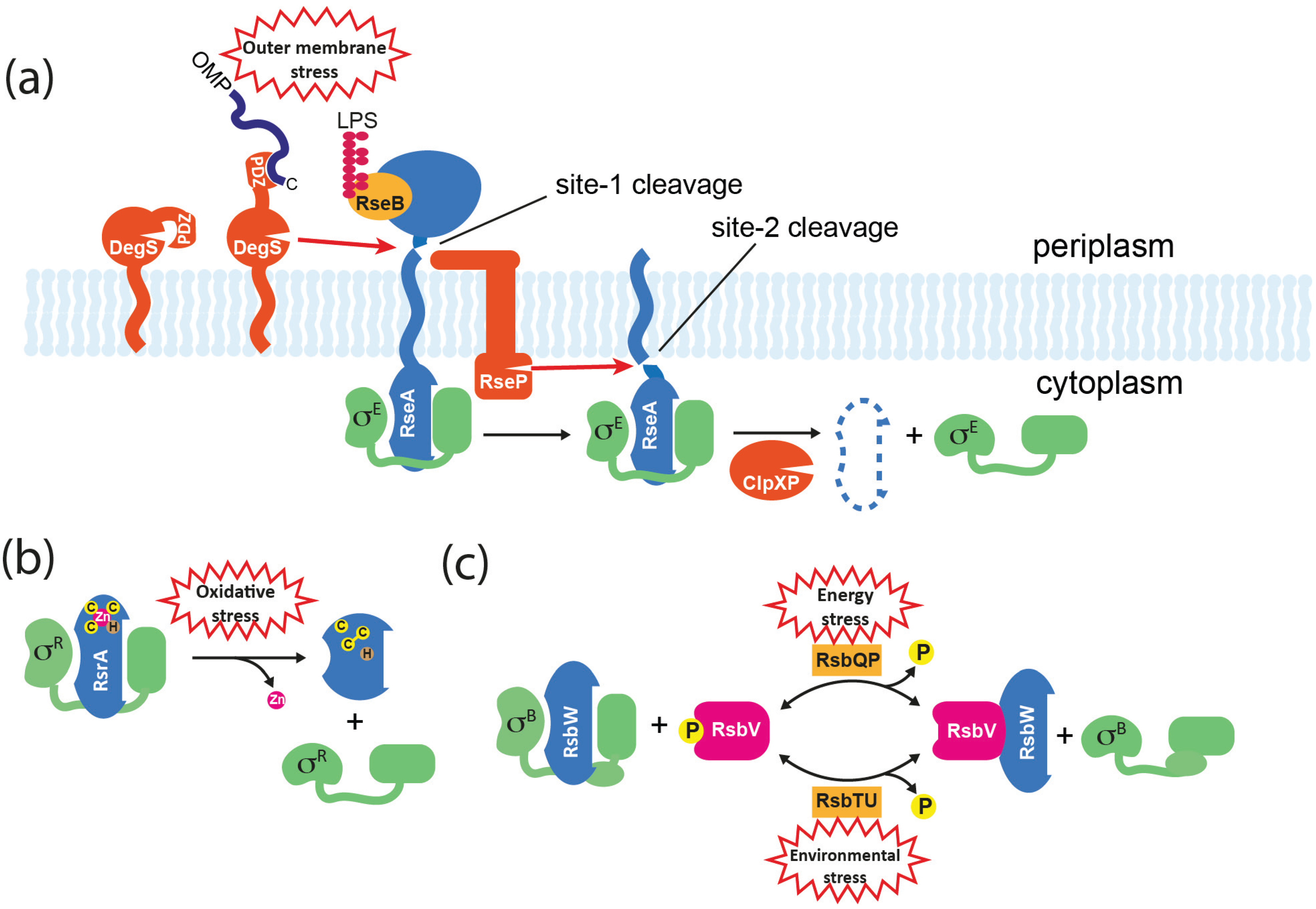 Source: mdpi.com
Source: mdpi.com
Thus these sigma factors form the framework for basic transcriptional regulation in bacteria. Like other ECF sigma factors such as RpoE AlgU promotes the expression of its own operon along with several other genes involved in alginate biosynthesis and regulation. Involvement of several sigma factors which change the specificity of host RNA polymerase for transcription of phage SPO1 genes σ 29 σgp 33 - σgp 34 The regulation of gene expression through a cascade has been studied in phage SPO1 infecting Bacillus subtilis. The basic regulation of bacterial sulfite oxidation by cognate ECF sigma factors is likely to be applicable to three groups of alpha and beta-Proteobacteria in which we identified similar SOE operon structures. As alternative sigma factors have been shown to regulate expression of both virulence and virulence-associated genes these proteins can contribute both directly and indirectly to bacterial virulence.
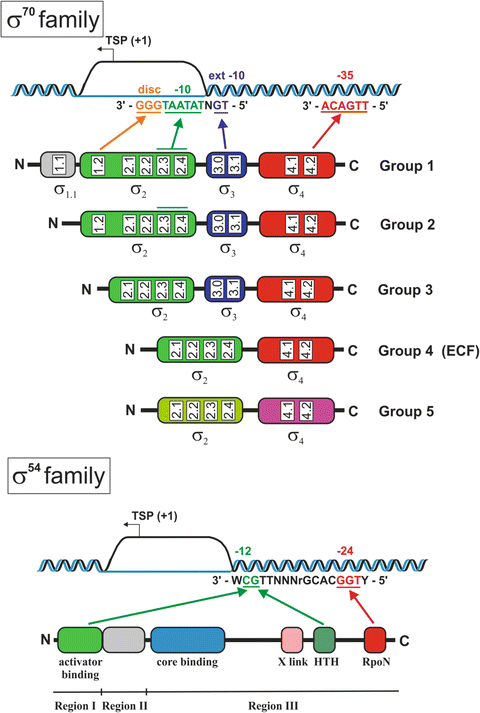 Source: link.springer.com
Source: link.springer.com
In these bacteria the heat-shock operons. Coding for chaperons are transcribed by the vegetative sigma factor σ70 or sigma Aand the IR is the only detected regulatory element13141623 The second regulatory system has been demonstrated in bacteria belonging to the α-purple proteobacteria Agrobacterium tumefaciens Bradyhizobium japonicum and Caulobacter crescentus. Biochemical identification of alternative σ factors involved in bacterial gene regulation The first indications that bacteria may also employ alternative σ factors to regulate gene expression emerged from biochemical studies of RNAP purified from B. Sigma factors are involved in the regulation of bacterial A DNA replication. Which statement is true regarding global gene regulation in bacteria.
 Source: bio.libretexts.org
Source: bio.libretexts.org
Analysis of the Streptomyces coelicolor sigE gene reveals the existence of a subfamily of eubacterial RNA polymerase sigma factors involved in the regulation of extracytoplasmic functions. Bacterial responses to environmental stresses are mainly regulated at the level of transcription initiation 1. Coding for chaperons are transcribed by the vegetative sigma factor σ70 or sigma Aand the IR is the only detected regulatory element13141623 The second regulatory system has been demonstrated in bacteria belonging to the α-purple proteobacteria Agrobacterium tumefaciens Bradyhizobium japonicum and Caulobacter crescentus. A Sigma factors are not involved in gene regulation just attachment of the polymerase to the promoter. The sigma factor allows the RNA polymerase to properly bind to the promoter site and initiate transcription which will result in the production of an mRNA molecule.
 Source: researchgate.net
Source: researchgate.net
Which statement is true regarding global gene regulation in bacteria. In these bacteria the heat-shock operons. Group 1 and group 2 sigma factors are sigma factors of bacterial RNA polymerase responsible for transcription from consensus-type promoters. Involvement of several sigma factors which change the specificity of host RNA polymerase for transcription of phage SPO1 genes σ 29 σgp 33 - σgp 34 The regulation of gene expression through a cascade has been studied in phage SPO1 infecting Bacillus subtilis. The first sigma factor discovered was the sigma70 σ70 of the highly studied bacterium Escherichia coli.
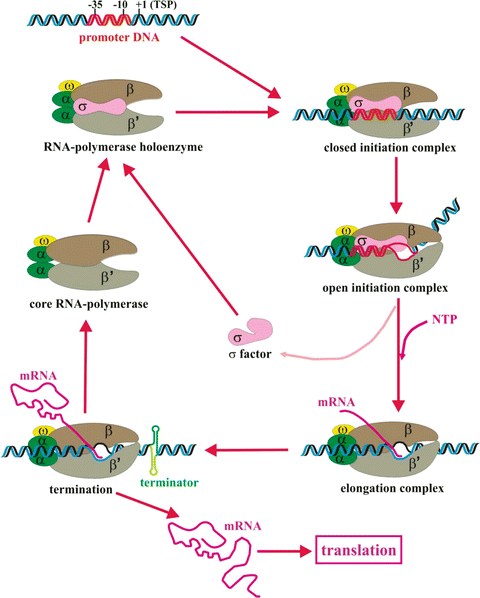 Source: link.springer.com
Source: link.springer.com
As alternative sigma factors have been shown to regulate expression of both virulence and virulence-associated genes these proteins can contribute both directly and indirectly to bacterial virulence. Biochemical identification of alternative σ factors involved in bacterial gene regulation The first indications that bacteria may also employ alternative σ factors to regulate gene expression emerged from biochemical studies of RNAP purified from B. Sigma factors are classified into two structurally. M A Lonetto K L Brown K E Rudd and M J Buttner. Like other ECF sigma factors such as RpoE AlgU promotes the expression of its own operon along with several other genes involved in alginate biosynthesis and regulation.
 Source: sciencedirect.com
Source: sciencedirect.com
Small ligands like ppGpp can influence the level of transcription of certain genes. Specifically in bacteria sigma factors are necessary for recognition of RNA polymerase to the gene promoter site. Biochemical identification of alternative σ factors involved in bacterial gene regulation The first indications that bacteria may also employ alternative σ factors to regulate gene expression emerged from biochemical studies of RNAP purified from B. Subtilis an organism with a complex developmental program culminating in endospore formation. M A Lonetto K L Brown K E Rudd and M J Buttner.
 Source: pnas.org
Source: pnas.org
Mathee et al 1999 Fig. Coding for chaperons are transcribed by the vegetative sigma factor σ70 or sigma Aand the IR is the only detected regulatory element13141623 The second regulatory system has been demonstrated in bacteria belonging to the α-purple proteobacteria Agrobacterium tumefaciens Bradyhizobium japonicum and Caulobacter crescentus. Biochemical identification of alternative σ factors involved in bacterial gene regulation The first indications that bacteria may also employ alternative σ factors to regulate gene expression emerged from biochemical studies of RNAP purified from B. Specifically in bacteria sigma factors are necessary for recognition of RNA polymerase to the gene promoter site. The sigma factor allows the RNA polymerase to properly bind to the promoter site and initiate transcription which will result in the production of an mRNA molecule.
 Source: researchgate.net
Source: researchgate.net
The sigma factor allows the RNA polymerase to properly bind to the promoter site and initiate transcription which will result in the production of an mRNA molecule. Coding for chaperons are transcribed by the vegetative sigma factor σ70 or sigma Aand the IR is the only detected regulatory element13141623 The second regulatory system has been demonstrated in bacteria belonging to the α-purple proteobacteria Agrobacterium tumefaciens Bradyhizobium japonicum and Caulobacter crescentus. They are responsible for determining the specificity of promoter DNA binding and control how efficiently RNA synthesis transcription is initiated. The anti-sigma factor MucA forcing the system into a permanent on state Boucher et al 1997a. Extracytoplasmic function ECF sigma factors constitute a large family of bacterial transcriptional regulators that direct transcription in response to various stresses and have different.
 Source: cchem.berkeley.edu
Source: cchem.berkeley.edu
As alternative sigma factors have been shown to regulate expression of both virulence and virulence-associated genes these proteins can contribute both directly and indirectly to bacterial virulence. Ad Bacterial plant mammalian Bio ST Guaranteed coverage. The number of sigma factors encoded by di erent bacterial species varies considerably and generally relates to the diversity of environmental conditions encountered by. This is primarily carried out by alternative sigma factors which allow promoter recognition and initiation of transcription as a subunit of RNA polymerase 2 3. Extracytoplasmic function ECF sigma factors constitute a large family of bacterial transcriptional regulators that direct transcription in response to various stresses and have different.
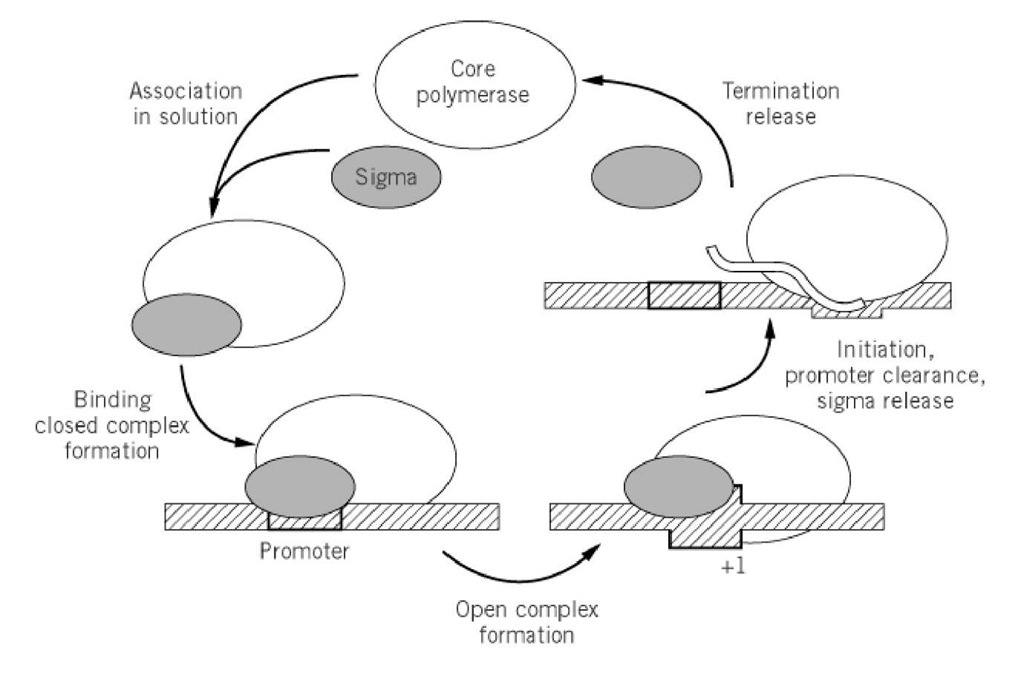 Source: what-when-how.com
Source: what-when-how.com
The anti-sigma factor MucA forcing the system into a permanent on state Boucher et al 1997a. As alternative sigma factors have been shown to regulate expression of both virulence and virulence-associated genes these proteins can contribute both directly and indirectly to bacterial virulence. The role played by sigma factors in bacterial gene regulation is briefly outlined. Analysis of the Streptomyces coelicolor sigE gene reveals the existence of a subfamily of eubacterial RNA polymerase sigma factors involved in the regulation of extracytoplasmic functions. Sigma factors are involved in the regulation of bacterial A DNA replication.
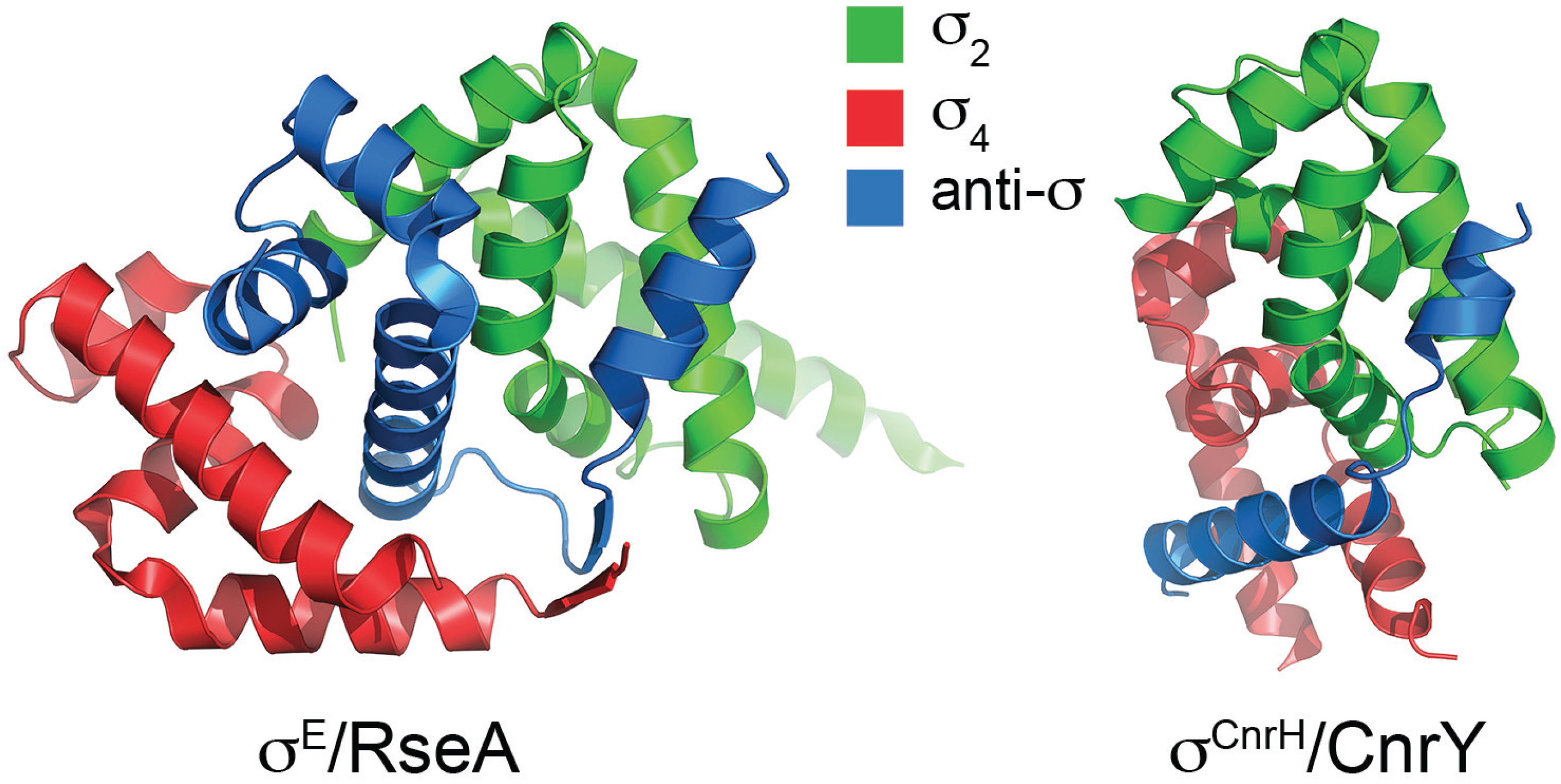 Source: mdpi.com
Source: mdpi.com
Like other ECF sigma factors such as RpoE AlgU promotes the expression of its own operon along with several other genes involved in alginate biosynthesis and regulation. The anti-sigma factor MucA forcing the system into a permanent on state Boucher et al 1997a. Mathee et al 1999 Fig. Sigma factors are proteins that function in transcription initiation. The number of sigma factors encoded by di erent bacterial species varies considerably and generally relates to the diversity of environmental conditions encountered by.
 Source: mol-biol4masters.masters.grkraj.org
Source: mol-biol4masters.masters.grkraj.org
AlgR algB algD algC and amrZ Firoved. Ad Bacterial plant mammalian Bio ST Guaranteed coverage. B Alternative sigma factors recognizing different promoters carry out global gene regulation. Which statement is true regarding global gene regulation in bacteria. Thus these sigma factors form the framework for basic transcriptional regulation in bacteria.
 Source: researchgate.net
Source: researchgate.net
They are responsible for determining the specificity of promoter DNA binding and control how efficiently RNA synthesis transcription is initiated. Subtilis an organism with a complex developmental program culminating in endospore formation. Extracytoplasmic function ECF sigma factors constitute a large family of bacterial transcriptional regulators that direct transcription in response to various stresses and have different. Sigma factors are involved in the regulation of bacterial A DNA replication. This is primarily carried out by alternative sigma factors which allow promoter recognition and initiation of transcription as a subunit of RNA polymerase 2 3.
 Source: researchgate.net
Source: researchgate.net
Coding for chaperons are transcribed by the vegetative sigma factor σ70 or sigma Aand the IR is the only detected regulatory element13141623 The second regulatory system has been demonstrated in bacteria belonging to the α-purple proteobacteria Agrobacterium tumefaciens Bradyhizobium japonicum and Caulobacter crescentus. Sigma factors are classified into two structurally. Involvement of several sigma factors which change the specificity of host RNA polymerase for transcription of phage SPO1 genes σ 29 σgp 33 - σgp 34 The regulation of gene expression through a cascade has been studied in phage SPO1 infecting Bacillus subtilis. Biochemical identification of alternative σ factors involved in bacterial gene regulation The first indications that bacteria may also employ alternative σ factors to regulate gene expression emerged from biochemical studies of RNAP purified from B. Sigma factors are involved in the regulation of bacterial A DNA replication.
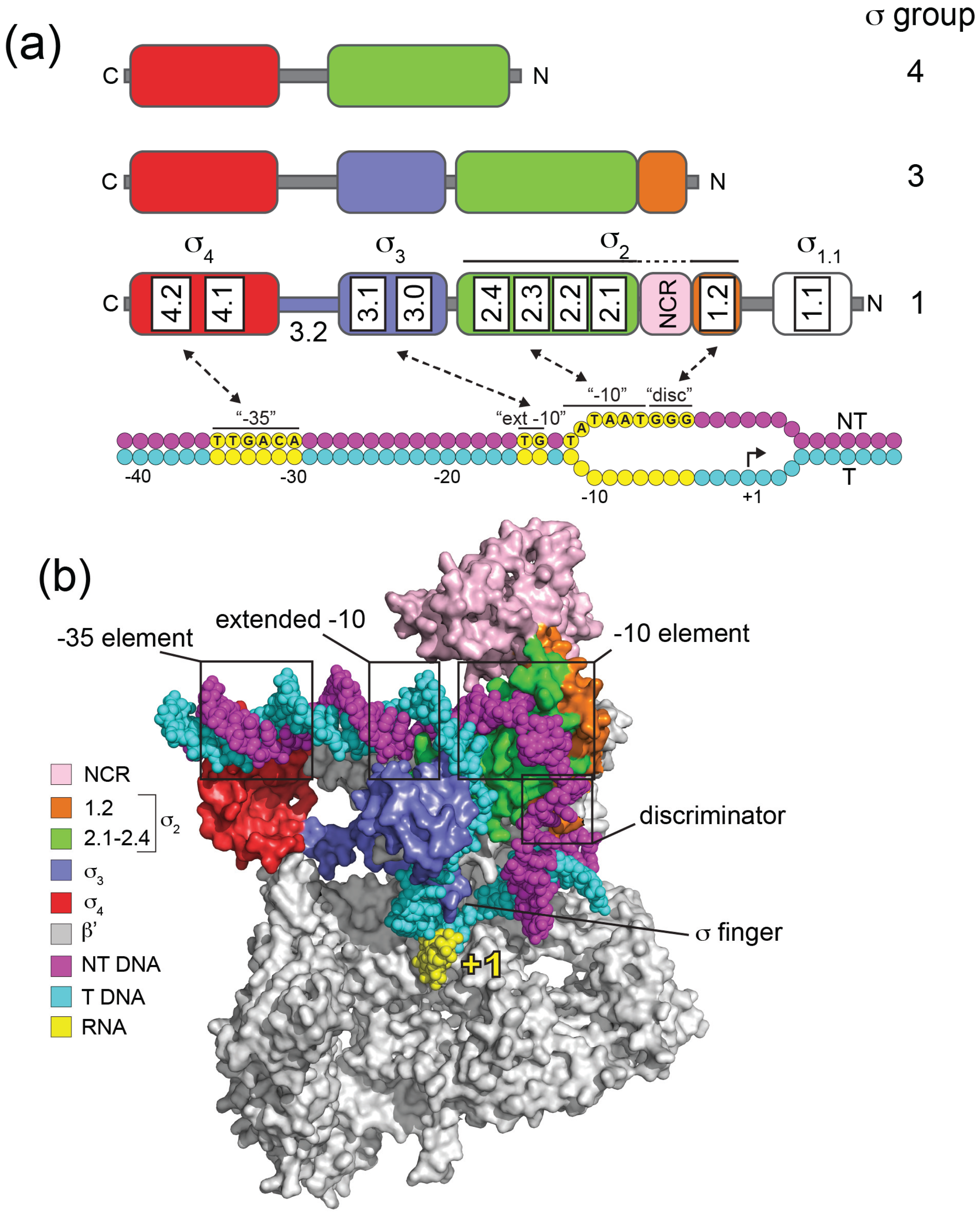 Source: mdpi.com
Source: mdpi.com
The basic regulation of bacterial sulfite oxidation by cognate ECF sigma factors is likely to be applicable to three groups of alpha and beta-Proteobacteria in which we identified similar SOE operon structures. Coding for chaperons are transcribed by the vegetative sigma factor σ70 or sigma Aand the IR is the only detected regulatory element13141623 The second regulatory system has been demonstrated in bacteria belonging to the α-purple proteobacteria Agrobacterium tumefaciens Bradyhizobium japonicum and Caulobacter crescentus. The basic regulation of bacterial sulfite oxidation by cognate ECF sigma factors is likely to be applicable to three groups of alpha and beta-Proteobacteria in which we identified similar SOE operon structures. The first sigma factor discovered was the sigma70 σ70 of the highly studied bacterium Escherichia coli. In these bacteria the heat-shock operons.
 Source: sciencedirect.com
Source: sciencedirect.com
The first sigma factor discovered was the sigma70 σ70 of the highly studied bacterium Escherichia coli. Coding for chaperons are transcribed by the vegetative sigma factor σ70 or sigma Aand the IR is the only detected regulatory element13141623 The second regulatory system has been demonstrated in bacteria belonging to the α-purple proteobacteria Agrobacterium tumefaciens Bradyhizobium japonicum and Caulobacter crescentus. Thus these sigma factors form the framework for basic transcriptional regulation in bacteria. The number of sigma factors encoded by di erent bacterial species varies considerably and generally relates to the diversity of environmental conditions encountered by. M A Lonetto K L Brown K E Rudd and M J Buttner.
This site is an open community for users to do submittion their favorite wallpapers on the internet, all images or pictures in this website are for personal wallpaper use only, it is stricly prohibited to use this wallpaper for commercial purposes, if you are the author and find this image is shared without your permission, please kindly raise a DMCA report to Us.
If you find this site adventageous, please support us by sharing this posts to your preference social media accounts like Facebook, Instagram and so on or you can also bookmark this blog page with the title sigma factors are involved in the regulation of bacterial by using Ctrl + D for devices a laptop with a Windows operating system or Command + D for laptops with an Apple operating system. If you use a smartphone, you can also use the drawer menu of the browser you are using. Whether it’s a Windows, Mac, iOS or Android operating system, you will still be able to bookmark this website.